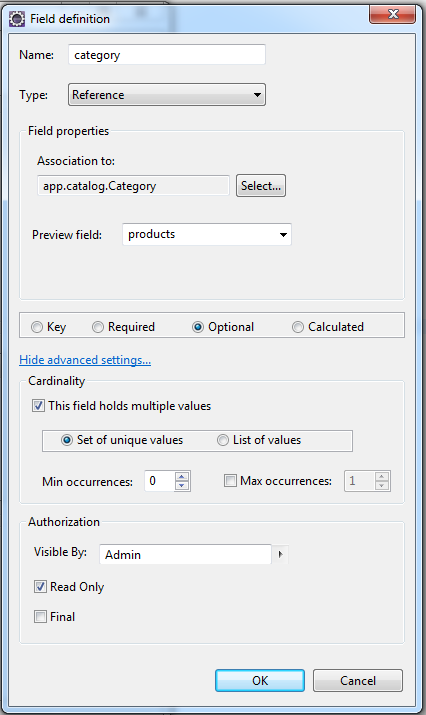Development Environment
A Jello based application is essentially a web application running on Google Cloud in an App Engine Java container. App Engine invokes your app's Jello servlet classes to handle requests.
You develop your application in Eclipse, using the Google Plugin and the Jello Plugin.
Your application code is analyzed by Jello's annotation processor in design time. This way, you should catch most of the model logic errors before you runs the app.
As a Google Cloud web application, Jello leverages all App Engine services and they are all available to you, including the Local Development Server and the Cloud Platform dashboard.
In runtime, Jello will scan the project's resources to find and register all Jello entities. No additional configuration settings is needed. All you need to do is to define the data entities based on your business domain and deploy them to the cloud.
Create new Jello Entity
You can use Jello » Jello New Entity wizard to generate the entity Java class and set the entity's access privileges.

Add a new field
You can use Jello » Add new Field wizard to add fields to your entities.

Advanced project settings
This section is optional.
You can modify aspects of Jello runtime behavior in the application configuration file:
<project-root> » war » WEB_INF » web.xml or app.yaml
If your project contains the app.yaml file, it will generate the app.xml file.
Application Cache
Read more in Performance guide- Jello cache.
Application search index
Read more in Entity definition guide- search index.
Concurrency control and ETags
More details coming soon
License and REST copyright text
More details coming soon
app.yaml
# Jello
- url: /jello/*
servlet: jello.JelloServlet
name: Jello
init_params:
#jello.cache.active: true
jello.cache.flushOnDeploy: false
jello.cache.validTimeSeconds: 3600
jello.license.key: <jello-license-key>
jello.copyright.text: <optional-custom-copyright-text>
jello.search.enabledByDefault: true
jello.concurrency.serveEtag: true
jello.concurrency.enforceEtag: false
web.xml
<servlet>
<servlet-name>Jello</servlet-name>
<servlet-class>jello.JelloServlet</servlet-class>
<init-param>
<param-name>jello.cache.flushOnDeploy</param-name>
<param-value>false</param-value>
</init-param>
<init-param>
<param-name>jello.cache.validTimeSeconds</param-name>
<param-value>3600</param-value>
</init-param>
<init-param>
<param-name>jello.concurrency.enforceEtag</param-name>
<param-value>false</param-value>
</init-param>
<init-param>
<param-name>jello.concurrency.serveEtag</param-name>
<param-value>true</param-value>
</init-param>
<init-param>
<param-name>jello.copyright.text</param-name>
<param-value>optional-custom-copyright-text</param-value>
</init-param>
<init-param>
<param-name>jello.license.key</param-name>
<param-value>jello-license-key-value</param-value>
</init-param>
<init-param>
<param-name>jello.search.enabledByDefault</param-name>
<param-value>true</param-value>
</init-param>
</servlet>
Dependencies
Jello JAVA Runtime
- Jello-2.0.1
- Objectify (5.1.22)
- Gson (2.8.2 or higher)
Jello JS Views
Unit tests
More details coming soon.
Was this page helpful? Let us know how we did:
Last updated March 8, 2019.